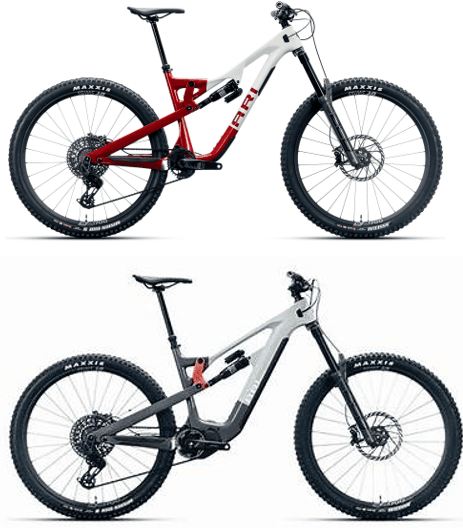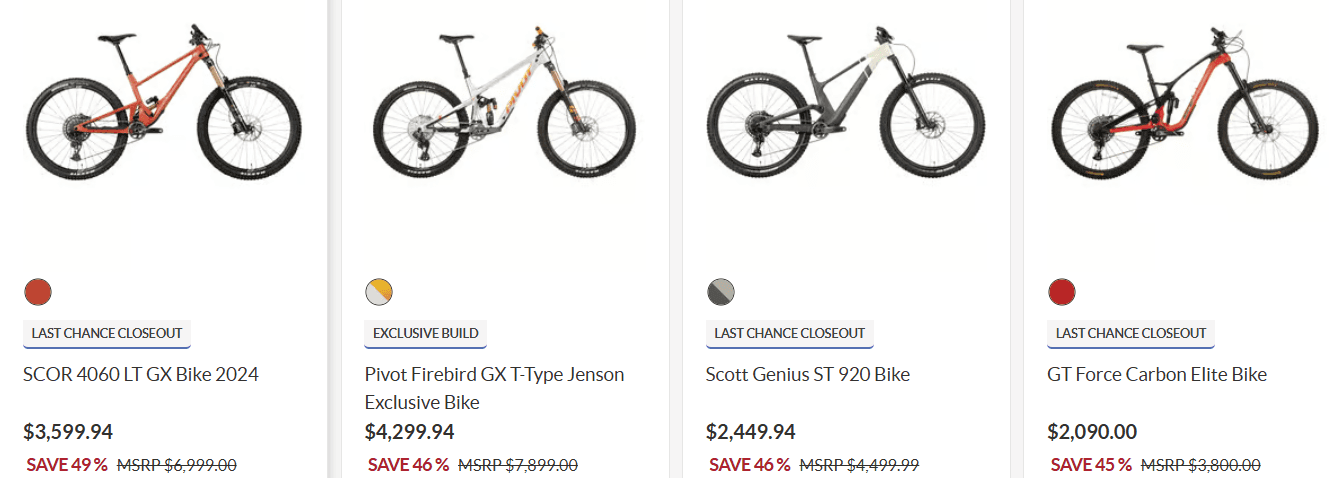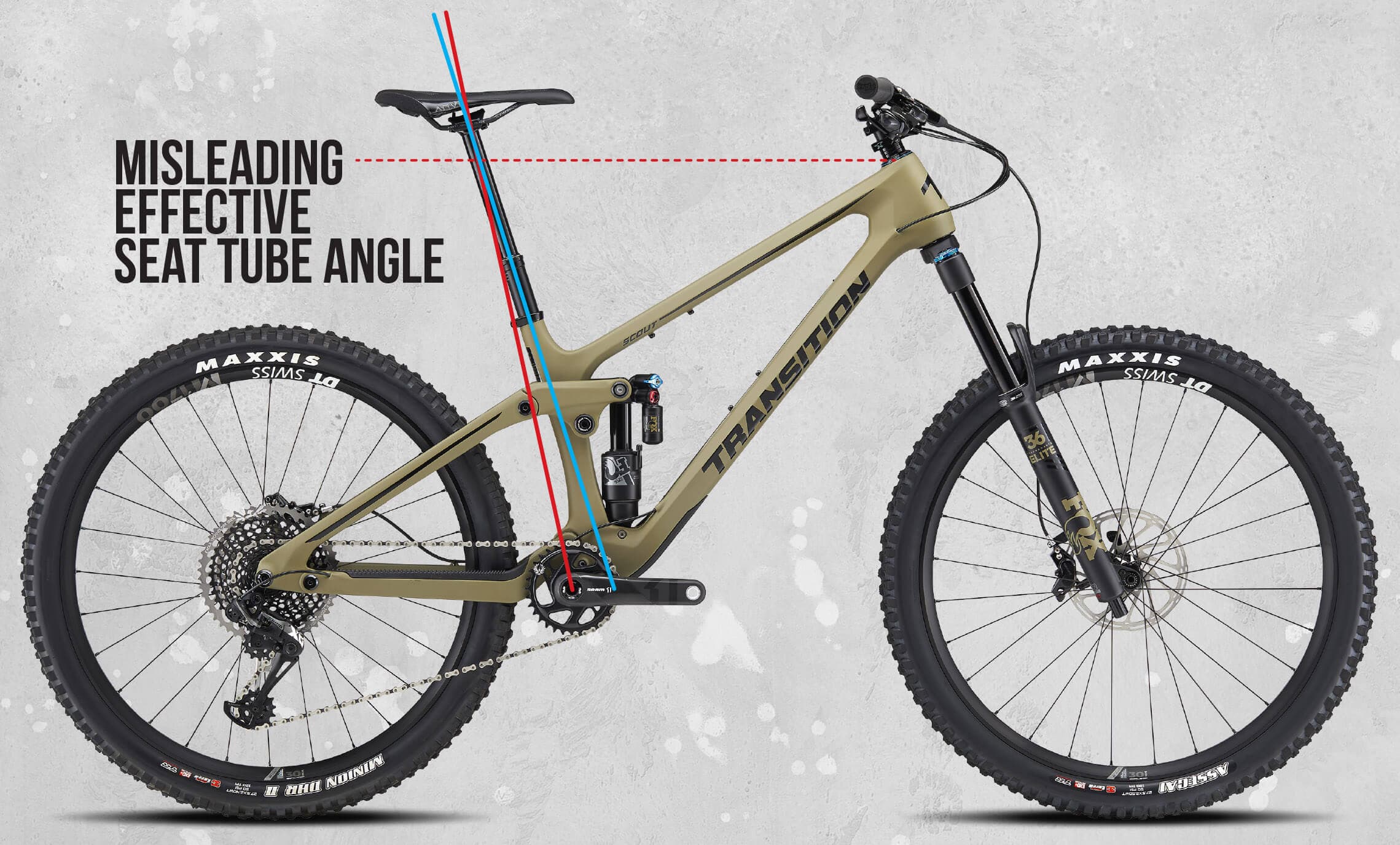Geometry and motors: Emtbs and mountain bikes

There are several key differences between e-bikes and typical mountain bikes, but for this discussion, let’s focus on one category: enduro bikes and all-mountain, long travel, or “mini downhill” bikes—generally those with 160mm or more rear travel.
Direct geometry comparison: Motor vs meat
Having owned both the La Sal Peak and the Timp Peak for over a year, I’m in a unique position to compare two bikes that share identical geometry except for the e-bike motor and battery. This setup minimizes confounding variables and highlights the real-world impact of e-bike systems. Their reach, stack, chain stay, and bottom bracket height are the same. The difference comes down to mass from the battery and motor, and the resulting change in center of mass location.
This one-to-one comparison provides the most accurate insight into differences between an e-bike and a traditional mountain bike without other ride-experience variables muddying the water.
Suspension and ride quality
While I liked the La Sal Peak, I felt the rear suspension was solid but less refined than some bikes I’ve owned. That said, the geometry is neutral: reasonable reach, stack, and head angle, plus a straight seat tube, which allows for a super-long dropper post. The bearings are easy to service, and the overall ride is lively and enjoyable for most things.
On especially high-speed or steep terrain, it sometimes felt unsettled compared to my favorite bikes. One minor complaint: the chain stay is a bit shorter than I'd prefer for this bike size and terrain/style. Still, it’s a great bike that I’d recommend to nearly anyone.
Interestingly, some reviewers described the La Sal Peak as a long travel trail bike rather than a full-on enduro rig. This perception may stem from its suspension and shock tune—and because it was compared alongside bikes with much more progressive geometry. Notably, the following year, the Ibis HD6—almost identical in geometry—received glowing praise, despite likely sharing many ride qualities. These contrasting reviews show how much our impressions rely on what we compare bikes against.
Chainstay length, traction, and fatigue
When it comes to geometry and handling, let’s talk about weight distribution and front-wheel traction.
Three primary ways to shift weight onto the front wheel:
- Extend the rear (longer chain stays)
- Shorten the front (reduce reach and/or stack)
- Shift your body position forward (move your center of mass)
All these approaches aim to proportionally move your center of mass (COM) toward the front wheel for better traction and control. Personally, I prefer longer chain stays with bikes that already have a long reach and wheelbase—this helps weight the front wheel, improving stability and braking power. The longer rear also allows you to maintain a strong, less fatiguing position with more weight on your feet, rather than overloading your hands. This is especially important for riders who aren’t ultra-fit racers; a more neutral, upright position can actually deliver better real-world performance.
If you’re having trouble weighting the front wheel, adding a longer stem or wider handlebars are options, but each can have unintended consequences. More and more bikes now offer adjustable or longer chain stays—giving riders flexibility to dial in what works for them.
Weight & center of mass
Now, let’s talk e-bikes. The only differences between my Timp Peak (e-bike) and La Sal Peak are the battery and motor. Body position, geometry, and overall ride setup stay the same.
One thing I’ve noticed: e-bikes tend to have better-feeling suspension across the board. The extra weight just makes the suspension feel more planted and responsive—a sentiment echoed by plenty of riders and tuners I’ve spoken to. There’s also noticeably more traction, and the bike feels glued to the ground. In corners, this added mass keeps both wheels connected, boosting confidence.
Another key difference is stability: Adding a motor and battery lowers your center of mass and moves it forward. There are three things influencing stability in this context: COM height, total mass, and base of support (wheelbase). E-mountain bikes increase mass and lower COM—even without changing geometry—which inherently makes them more stable than their traditional equivalents. On my Timp Peak, I didn’t feel I needed as long a chain stay as on the La Sal, since the lower, forward COM already put plenty of weight on the front end for traction.
Stability and the “Ebike geometry” idea
After riding a range of e-bikes, I’m convinced there’s actually a wider window of what works, geometry-wise, for e-bikes. Thanks to ground-hugging stability and a heavier chassis, riders can thrive on bikes that are both longer and shorter. For years, e-bikes often had longer chain stays—partly because motors and batteries forced packaging compromises, and partly for added climbing control (helping keep the front wheel down with all that extra torque).
But modern long-travel e-bikes are so inherently stable that I sometimes think they would actually benefit from slightly shorter chain stays, which would restore some of the playful handling many riders love. This mindset contrasts with the industry trend of ever-increasing chain stay lengths.
Personal takeaways
Ultimately, I believe there isn’t, and shouldn’t be, a rigid formula for “correct” e-bike geometry compared to regular mountain bikes. Every rider brings different preferences, body shapes, riding styles, and terrain needs. If there’s a unifying concept, it’s that e-bikes are stable enough for brands to experiment with shorter frames and chain stays and still deliver great performance.
Brands are trending toward longer reaches and higher stacks. That’s not inherently bad, but stretched-out bikes can compromise control, especially if they move your COM down and forward, leading to a more tiring position. I’ve owned both large and XL versions of several frames, and the difference in control and effort from too much weight on the hands makes it hard work.
Rather than buying marketing claims or hunting for “the right answer,” I encourage riders and engineers alike to thoughtfully consider how geometry and biomechanics intersect—and to seek out the setup that best fits their actual needs.

